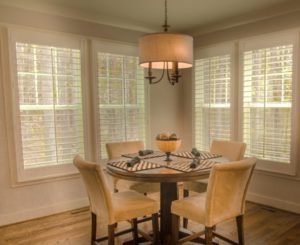
 Even though blinds are not as durable as interior plantation shutters, Tampa residents need to realize that plantation shutters are not indestructible. For some reason or another, interior plantation shutters will wear down and get broken if someone does not take care of them or by other means such as children roughhousing or animals getting into them. When plantation shutters are taken care of, it is not uncommon for them to last twenty years or more without them breaking, but accidents do happen. If one part of the interior plantation shutter is broken, that does not mean a homeowner has to get a whole new interior plantation shutters, but rather they need to replace a specific part of it. Here are the most common pieces of window shutters that may be replaced at some point or another.
Even though blinds are not as durable as interior plantation shutters, Tampa residents need to realize that plantation shutters are not indestructible. For some reason or another, interior plantation shutters will wear down and get broken if someone does not take care of them or by other means such as children roughhousing or animals getting into them. When plantation shutters are taken care of, it is not uncommon for them to last twenty years or more without them breaking, but accidents do happen. If one part of the interior plantation shutter is broken, that does not mean a homeowner has to get a whole new interior plantation shutters, but rather they need to replace a specific part of it. Here are the most common pieces of window shutters that may be replaced at some point or another.
Window Shutter Louvers
The slats of the window shutters, which are known as louvers, are one of the main moving parts that make it functional to have interior plantation shutters. Tampa residents should be aware that if something was to break on a homeowner’s window shutters, there is a good chance it is one of these louvers. A Broken louver can have trouble opening up with the rest of the louvers, creating problems separate from visibility issues. The good news is that if one louver breaks, that does not mean that a homeowner has to replace all of their louvers.
Window Shutters with Tilt Bar Issues
Louvers are not the only moving part to make window shutters work properly. When it comes to interior plantation shutters, Tampa residents might experience a broken tilt bar, which is the piece that moves all the louvers evenly and at once. If the tilt bar is broken on someone’s window shutters, the louvers will not open properly or will not stay open to let in sunlight. This is often one of the most common issues that someone may have if they ever come across a problem with their interior plantation shutters.
*Disclaimer: The views expressed here are those of the authors and do not necessarily represent or reflect the views of Shutter Professionals*

